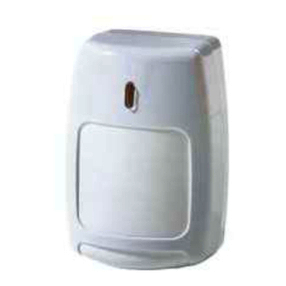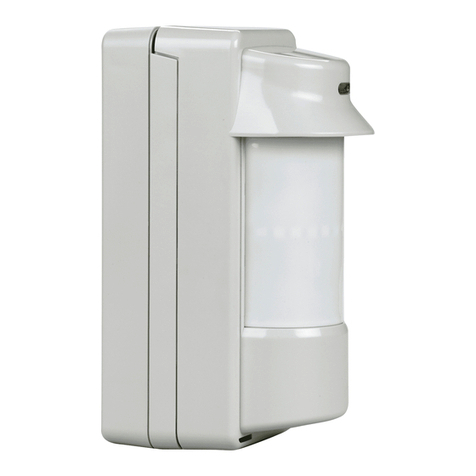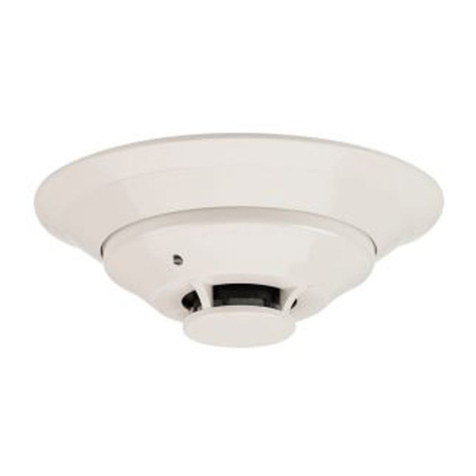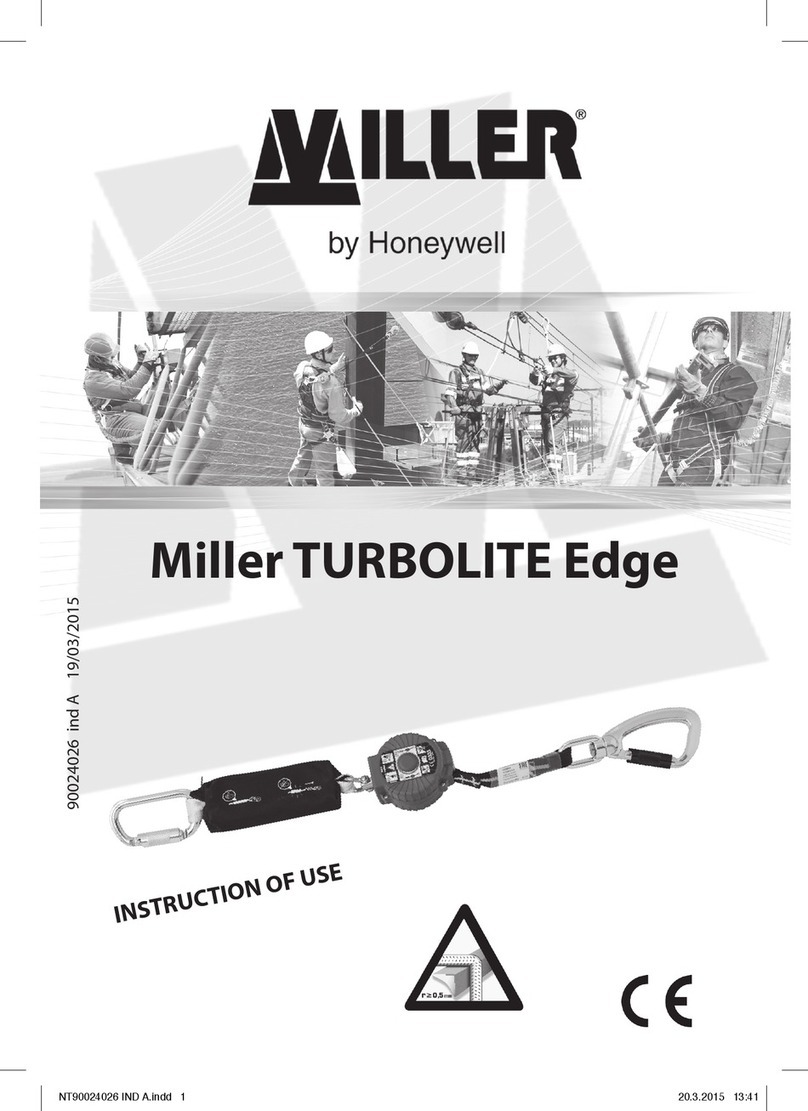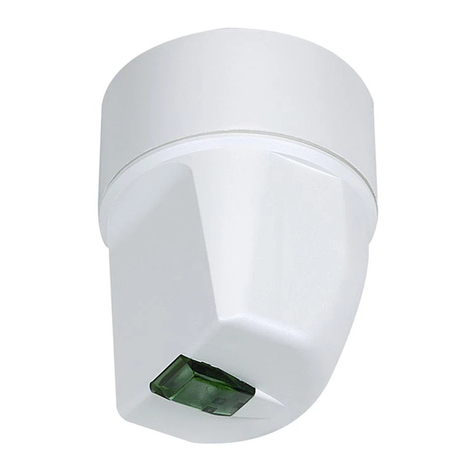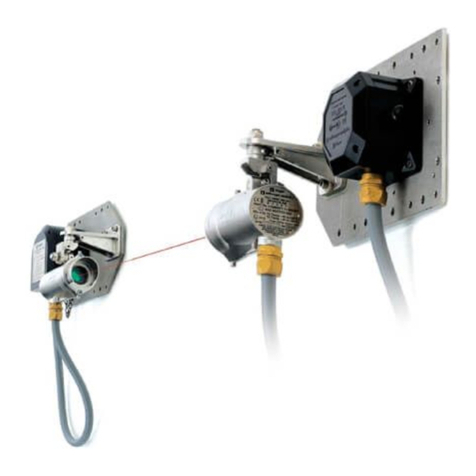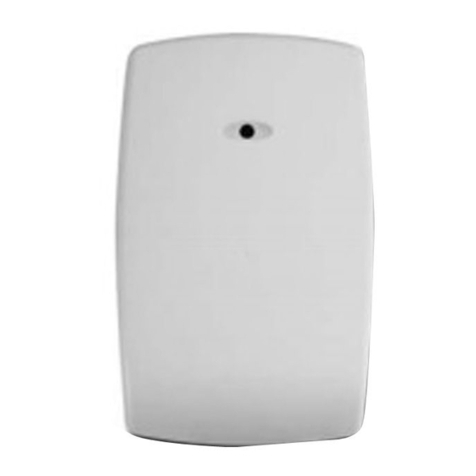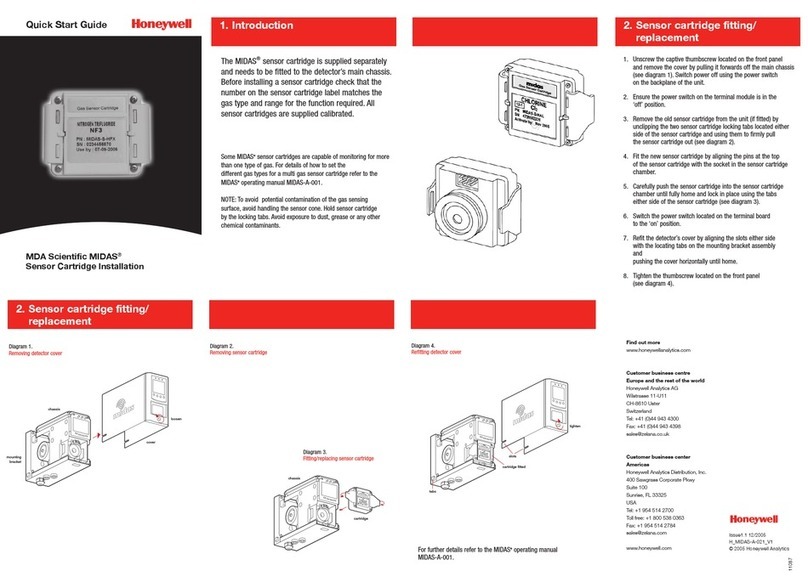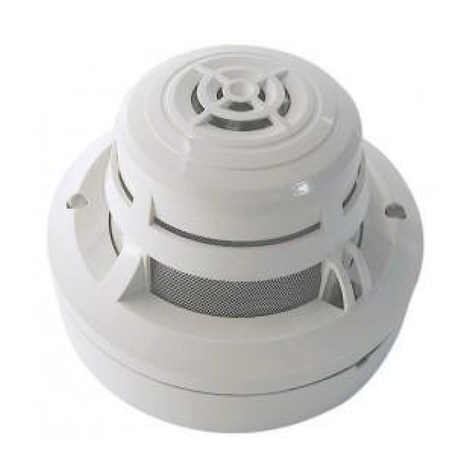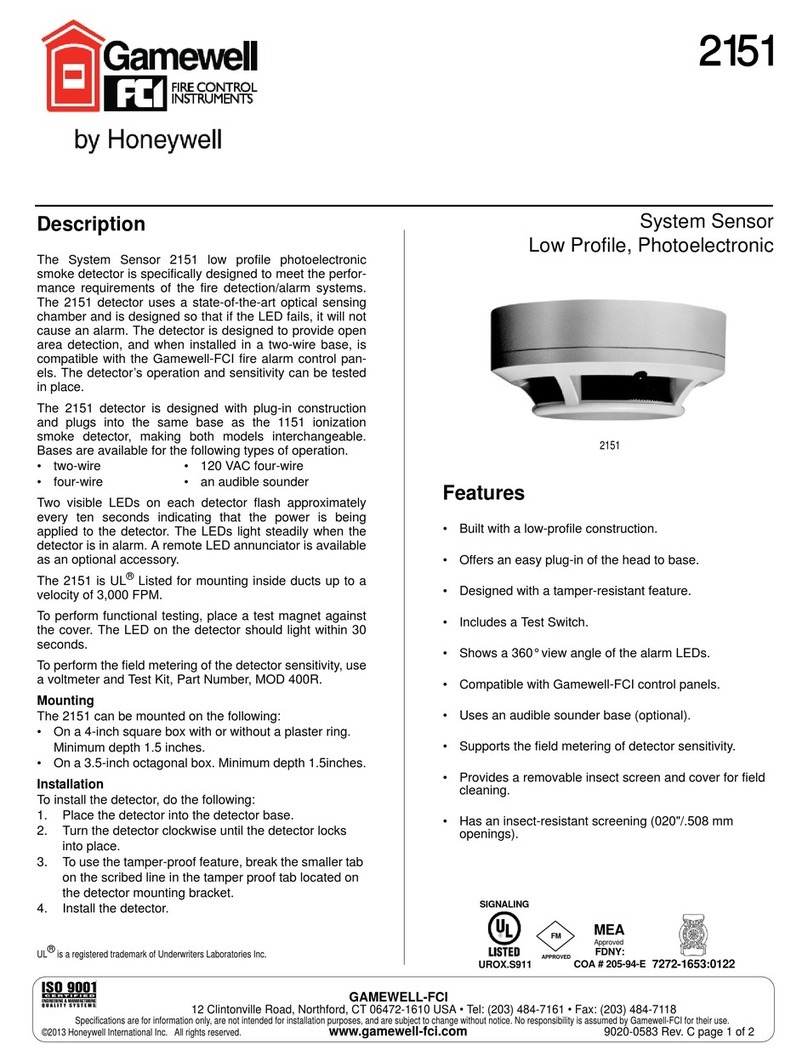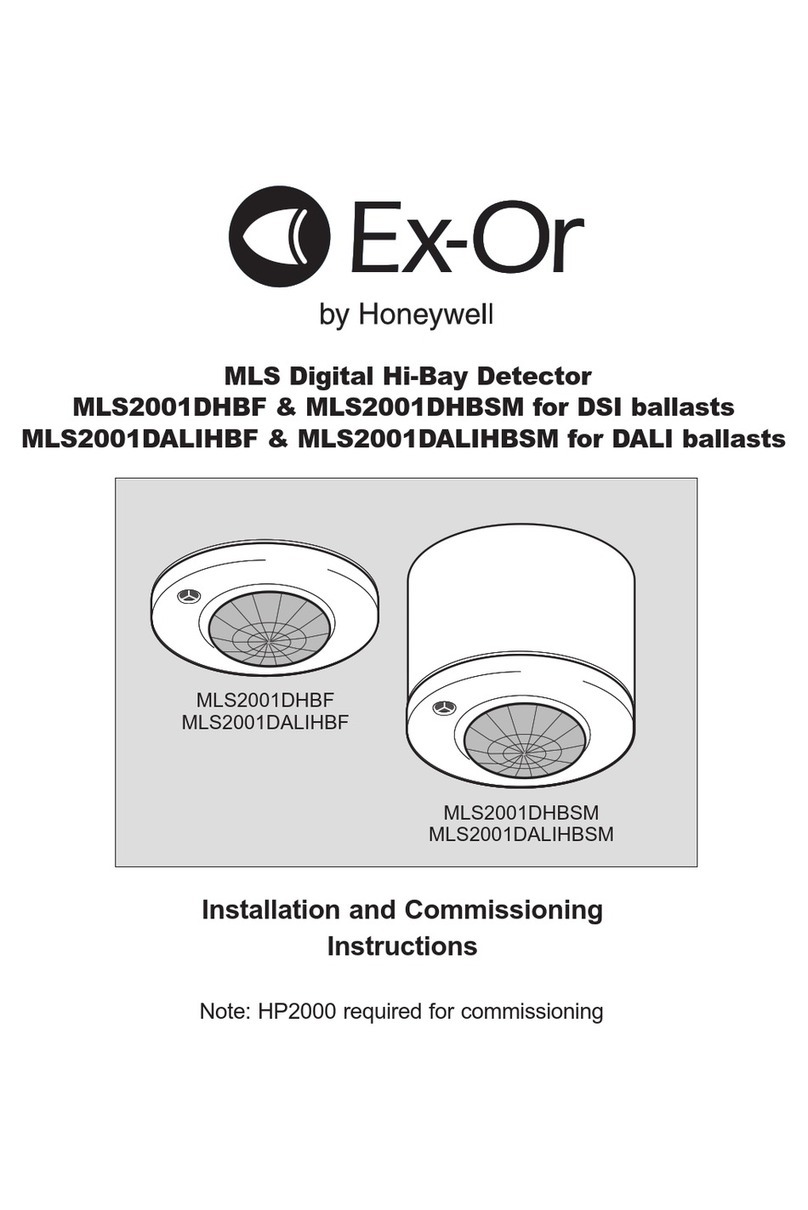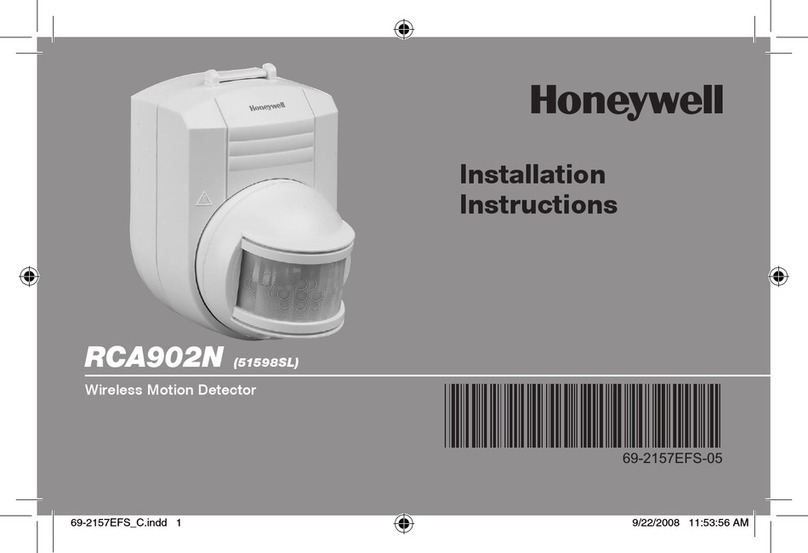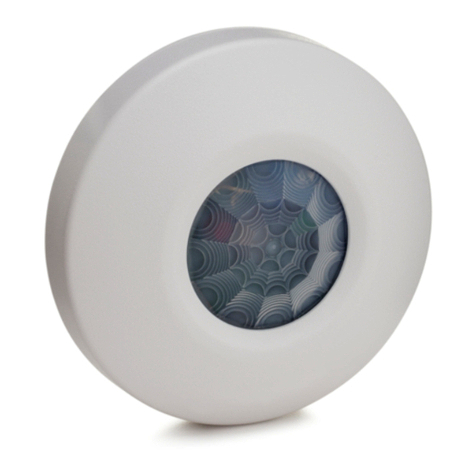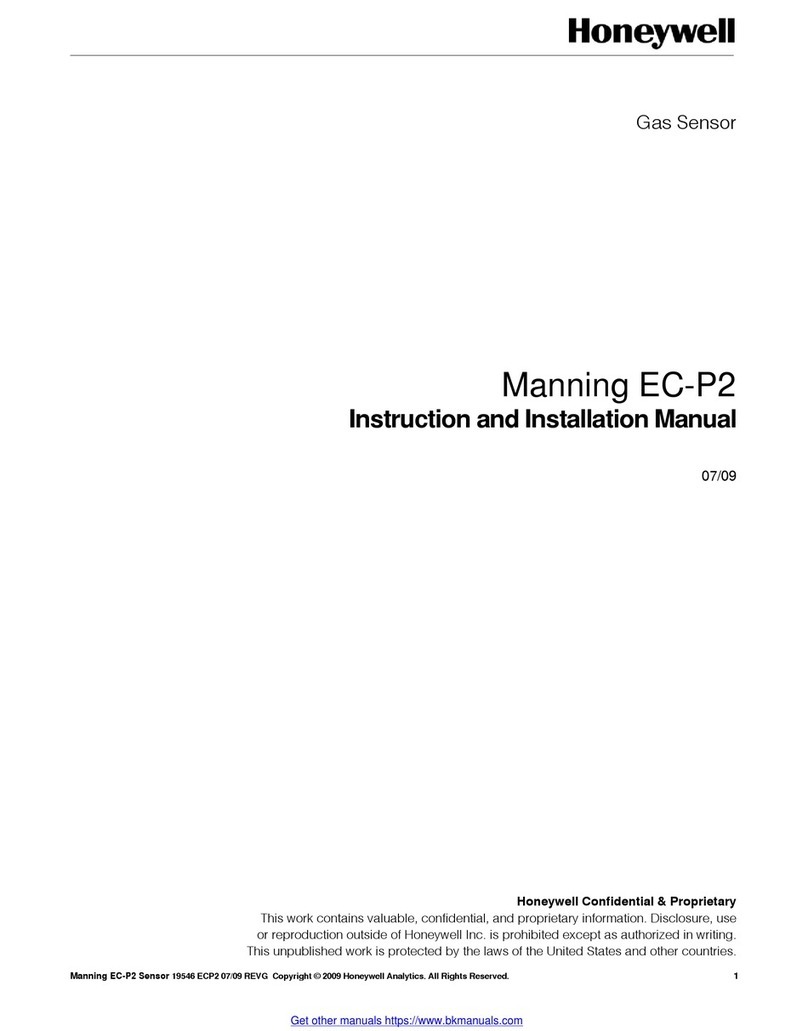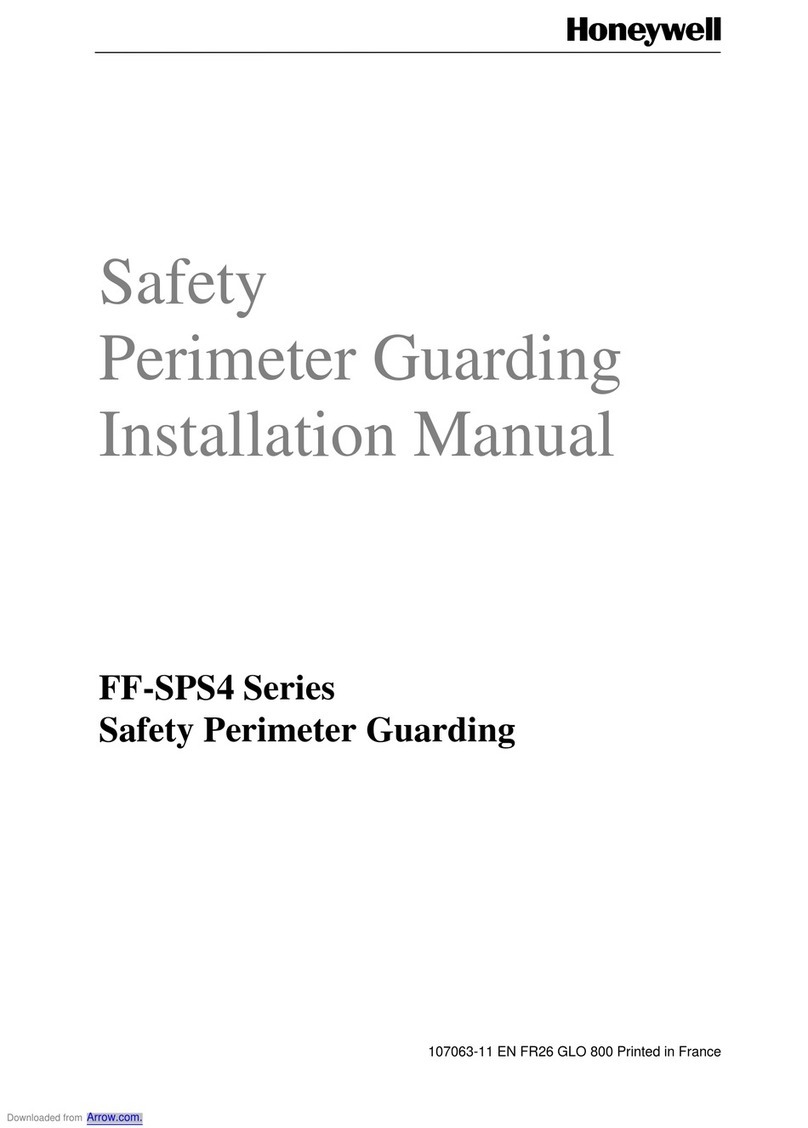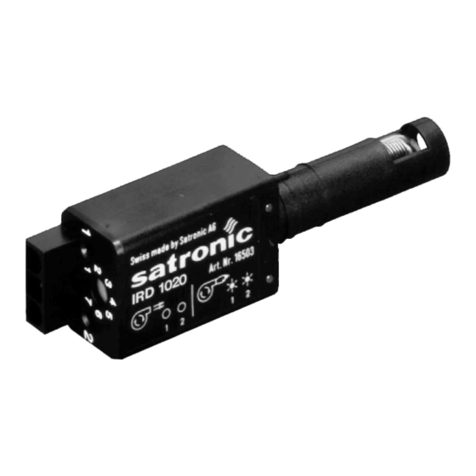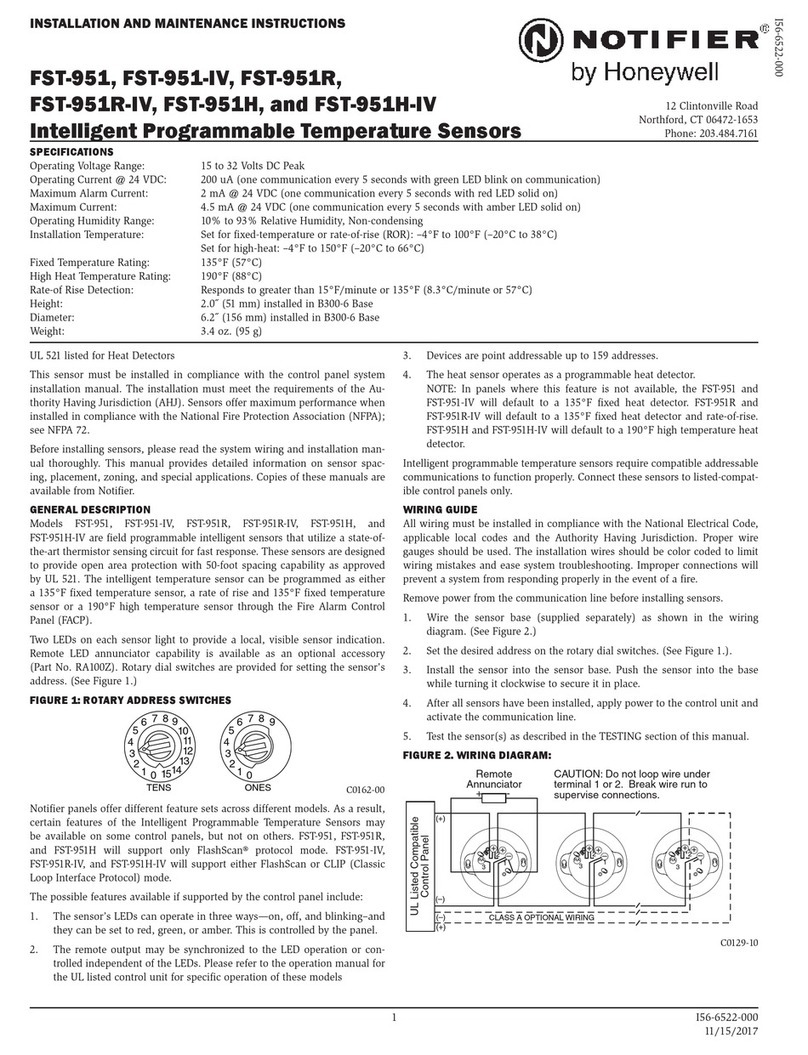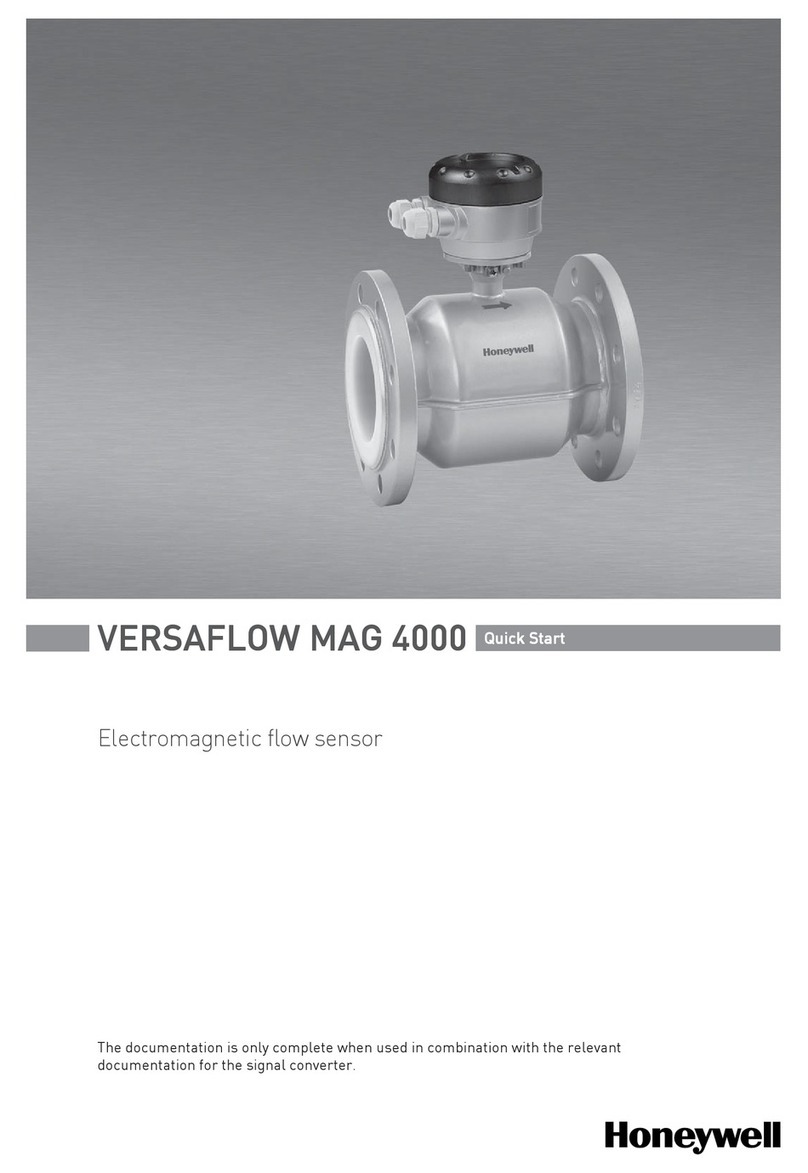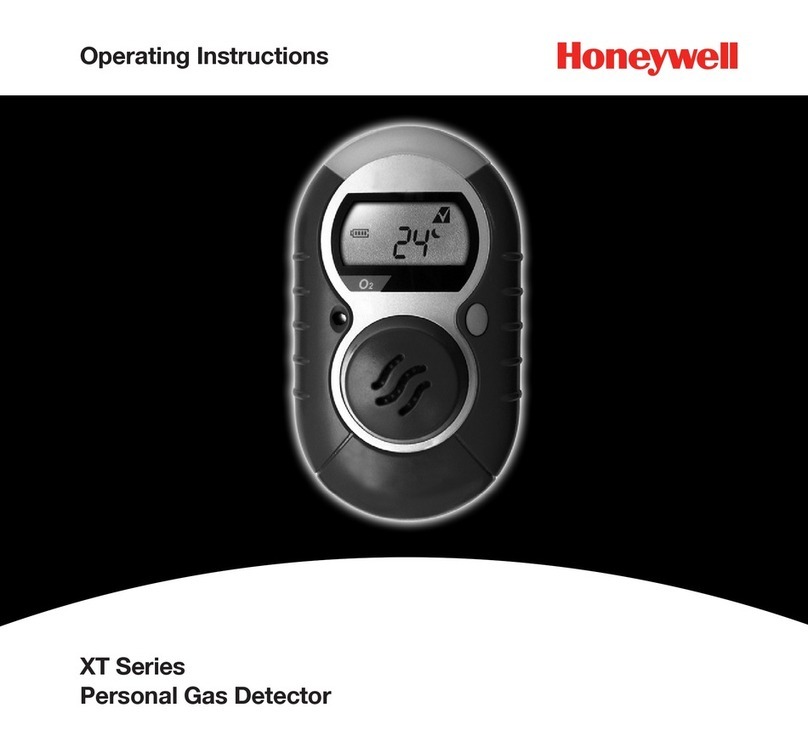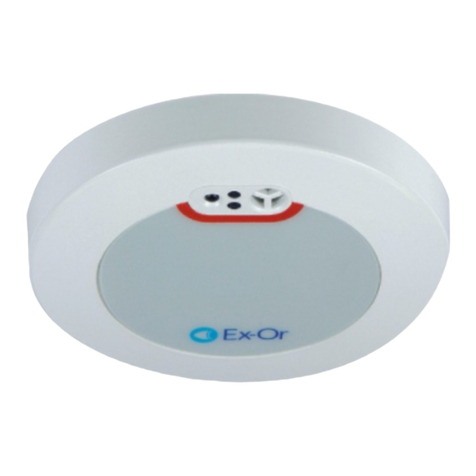
HUSH FEATURE / ALARM SILENCE
If required, the audible alarm for smoke and CO conditions can be
silenced for 5 minutes by pushing the “Test/Hush” button. In addition, low
chirping can be silenced for 12 hours when the Test/Hush button is
pressed.
During a Smoke alarm, if an alarm condition still exists after the 5 minute
hush period, the alarm will sound. The hush feature will not operate at
levels above 4%/ft smoke concentration.
During a CO alarm, if carbon monoxide is still present after the 5 minute
hush period, the alarm will sound. The hush feature will not operate at
levels above 350 ppm (parts per million) carbon monoxide.
CO SENSOR END-of-LIFE FEATURE
When the CO sensor has passed end-of-
life, a trouble signal will be sent to
the control panel (if programmed). This indicates that the CO sensor inside
the detector must be replaced. If unresolved for 30 days, the detector will
chirp every 45 seconds. The typical life of the CO sensor is ten years from
the date of manufacture. It is recommended to periodically check the
“Replace by” date located on the label on the back of the detector head.
TESTING SIGNAL STRENGTH
Perform this test in accordance with NFPA 72 inspection, testing and
maintenance requirements to determine a strong communication path with
the control panel.
1. Activate the wireless system’s GO/NO GO TEST mode.
2. Press the detector’s Smoke TEST button (•) for 1-2 seconds. The
detector should immediately transmit an alarm signal to the control
panel. The built-in horn will start to sound about 2.5 seconds after
pressing the button.
3. The wireless system’s keypad should emit at least three beeps when
the alarm transmission is received and display the transmitting
detector’s zone number.
4. When the console has received the test signal, the horn will stop and a
few seconds later the detector’s zone number will clear from the co
display.
5. If the console does not respond as noted, and if this is an initial
installation, try moving the detector to another location that provides
proper reception. Also be sure that the detector has been “enrolled” by
the control panel (see Enrollment section). Then, repeat the test.
6. Turn off the system’s TEST mode (typically security code + OFF).
REPLACING THE BATTERIES
CAUTION: The batteries used in this device may present a fire or
chemical burn hazard if mistreated. Do not recharge, disassemble, heat
above 100°C (212°F) or dispose of in fire. Use only Panasonic CR123A
Lithium batteries. Use of other batteries may present a risk of fire or
explosion. Keep used batteries away from children. Dispose of used
batteries properly.
Remove old batteries. Wait 10 seconds and then replace with four new
batteries. To avoid a low battery indication when installing new batteries,
all 4 batteries must be installed within 15 seconds of installing the first one
Any low battery condition that may have occurred should clear when the
base plate is installed.
CLEANING
NOTE:Notify the proper authorities when the system
will be temporarily out of service.
IMPORTANT: This detector must be tested and
maintained regularly following NFPA-72 requirements.
The detector should be cleaned at least once a year.
1.
Remove the detector from the base plate by turning
counterclockwise.
2.
Clean the outside casing with a cloth. Ensure that
the holes on the front of the alarm are not blocked
with dirt and dust. Canned air can be used to
remove any dust or debris.
3.
Reattach the detector to the base plate by rotating
clockwise.
4.
Test the detector to insure it is fully functional. (See
Testing section).
5.
Notify the proper authorities and Central Station
when the system is back in service.
MAINTENANCE
Do not paint, and do not use cleaning agents, bleach
or polish the detector.
NOTE: Before performing any maintenance on the detector,
notify the proper authorities and Central Station that
maintenance is being performed and the system will be
temporarily out of service. Disable the zone or system
undergoing maintenance to prevent any unwanted alarms.
Power must be removed from the detector before performing
maintenance of any kind.
The 5800COMBO detector reports maintenance issues
to the control panel and communicates them visually
and audibly per Table 2.
Trouble feature: When the sensor (supervision) is in a
trouble condition (such as a detector that is dirty or CO
sensor non-functioning), the detector will send a trouble
signal to the control panel. Depending on the issue, the
detector must then be serviced or replaced.
NOTE: Smoke detectors are not to be used with detector
guards unless the combination is evaluated and found
suitable for that purpose.
LED INDICATORS
The 5800COMBO has a multi-color top LED:
Green = Supervisory indication; blinks during power on,
reset, and during normal operation
Amber = Signal maintenance and trouble events
Red = Alarm condition (either Smoke or CO)
Side LED windows indicate alarms:
red = smoke
Table 3: Carbon Monoxide Detector: Events and Their ID Codes
Event Alpha Keypad
CS Report
detector
CO Trouble
RF sensor supervision
(CID 381)
detector end-of-
life/trouble CO Trouble sensor trouble - end-of life
(CID 380)
tamper
armed = CO Alarm
RF sensor tamper
(CID 383)

